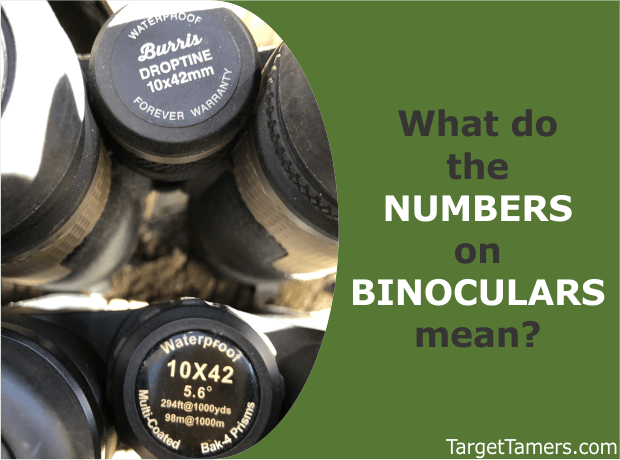
Be prepared to go down a rabbit hole of numbers, specs, and multiple binocular options if you’re buying your first pair or are new to the optics world.
Fortunately, binocular numbers and terminology are easy to understand.
The numbers displayed on binoculars indicate the binocular’s configuration, meaning, the magnification and objective lens size. The “x” separating the numbers represents magnification or power and immediately follows and belongs to the first number. The second number is the objective lens size or aperture.
With these numbers, you can quickly determine if it could be the right pair of binoculars for your intended use.
Let’s take a closer look at what they mean, some examples, and how other specs must not be overlooked.
What do Binocular Numbers Mean?
The first set of numbers you will see in a binocular’s model name or in the description will be the configuration. Two numbers are separated by an ‘X’ and this immediately tells the buyer and/or user how much magnification or power it has and how big the objective lenses are.
Example:
8x42 = 8x magnification and 42mm objective lens size
Binocular magnification can vary from as a low as 4x to as high as 25x and more. Objective lenses can be as small as 20mm and as large as 80mm.
Magnification
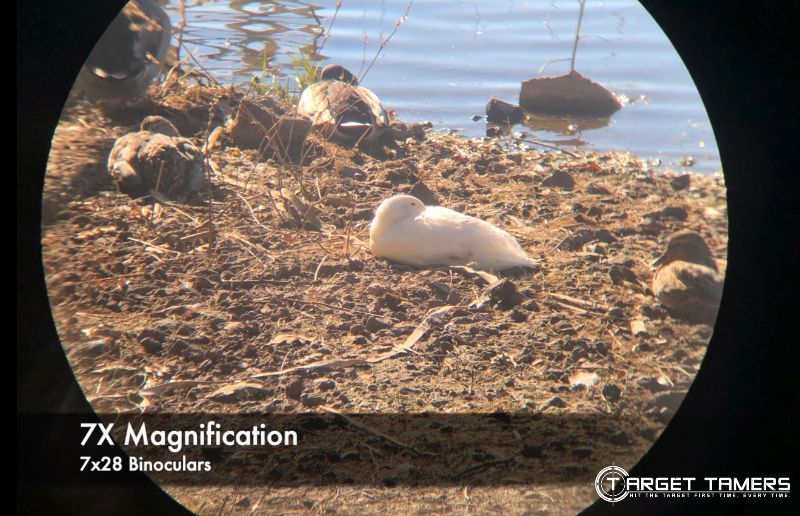


The first number is the amount of magnification or power the binocular has. If a binocular has 7x as the first number, it has 7x magnification. Consequently, what you see through the binocular appears to be 7x closer or magnified to appear 7x larger compared to natural, naked-eye vision.
Is More Magnification Always Better?
As a general rule, 6x to 8x binoculars are the best magnification ranges for image stability when using it as a handheld device. 10x to 12x is also acceptable for most users although it can be mounted. Higher powered binoculars are designed for and best used when mounted to a tripod.
Many first-time buyers may make the mistake of assuming that more magnification is always better, this is not necessarily the case. Put your lenses on our How Far Can You See with Binoculars guide to help determine how much power you need.
What Magnification is Good for Binoculars?
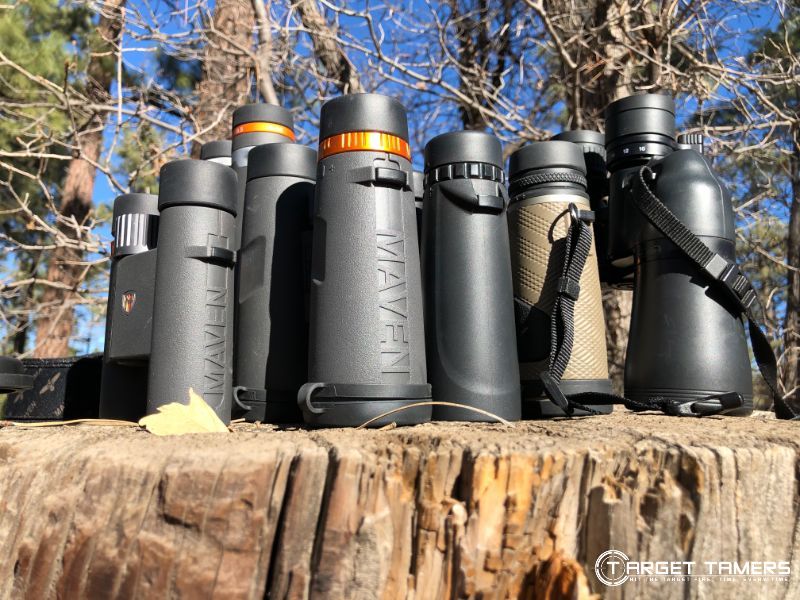
Some of the most popular binocular configurations are comprised with 8x and 10x magnifications. They offer a balance between image stability and having high power to appropriately observe mid-range to long-range targets with advantageous field of views.
However, no one binocular magnification is great for everything. To get examples of what magnifications are recommended for different applications from hunting and safari to concerts and events, check out or Best Binocular Magnification guide.
Are Zoom Binoculars Any Good?
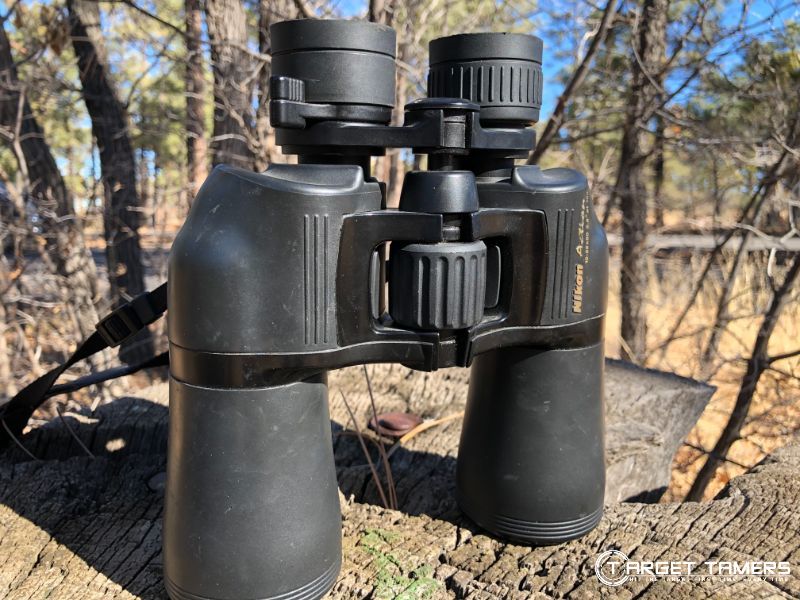
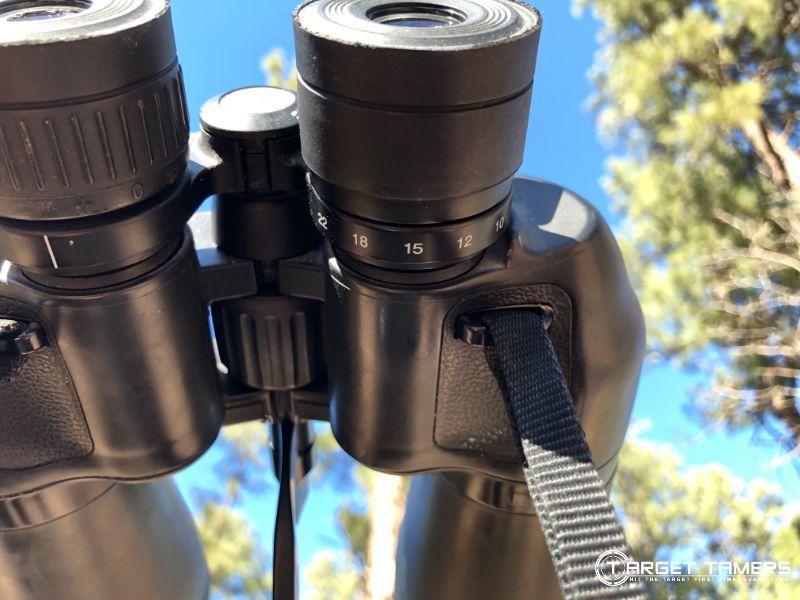
Most binoculars are fixed power meaning that they only offer one magnification. However, there are zoom binoculars that allow you to zoom in and thus change the magnification between a given range. While convenient and practical, they struggle with optimal optical and collimation performance.
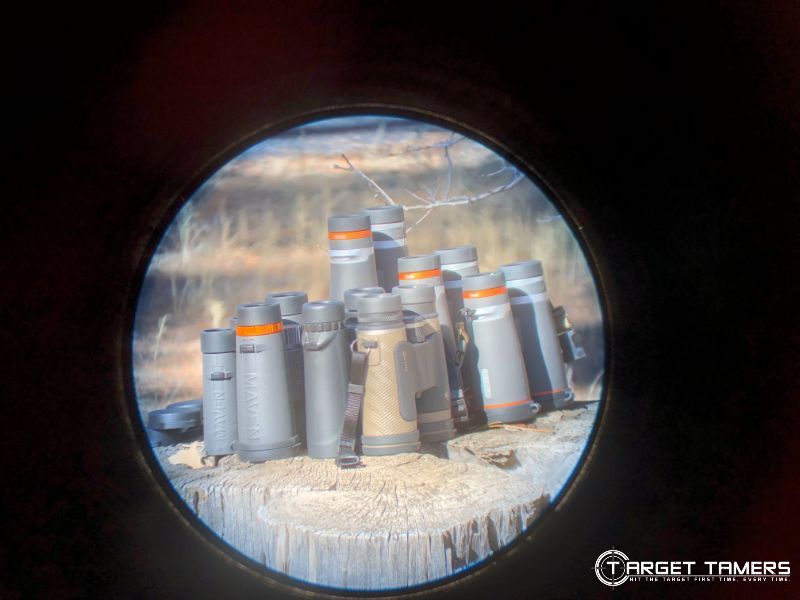
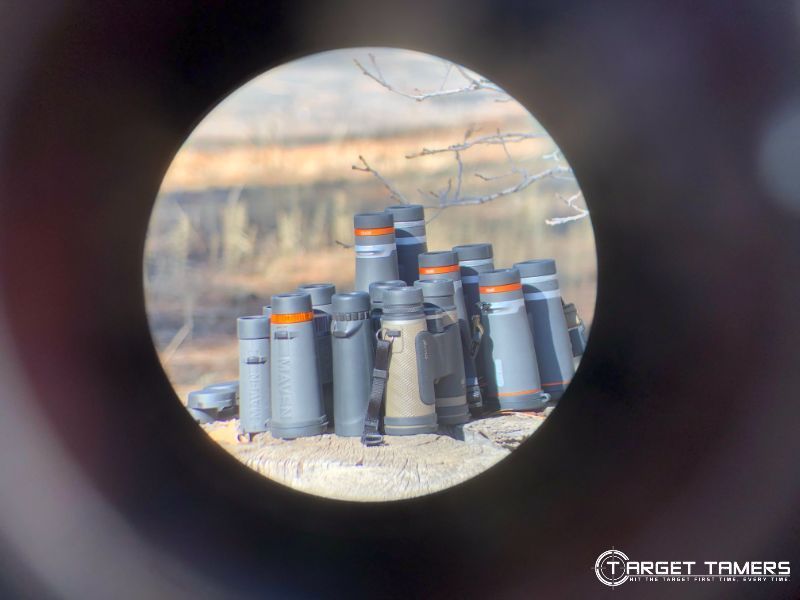
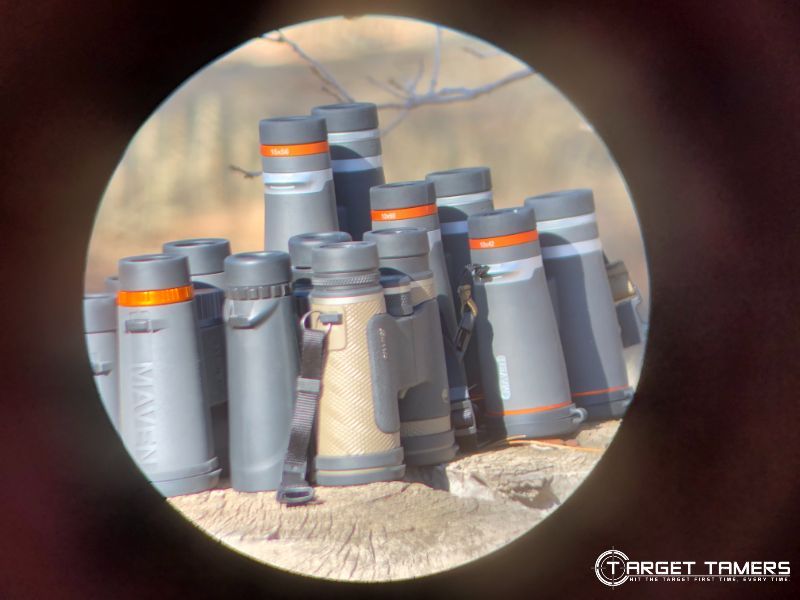
If you’re considering a zoom binocular, get up to date on how it works and its pros and cons in our Zoom Binoculars mini guide.
Objective Lens Size
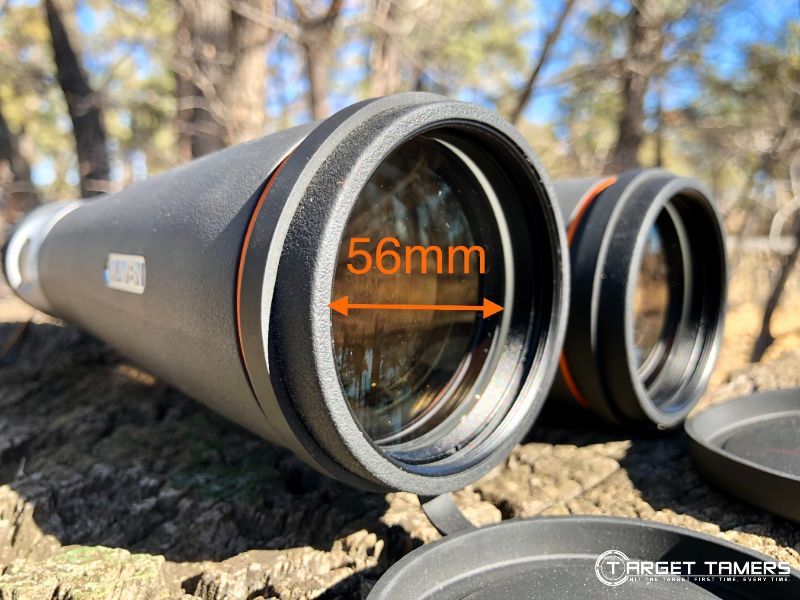
The objective lenses are the large pieces of glass where light enters the binoculars. The objective lens size is measured in millimeters and is often referred to as the aperture as it is the diameter of the lens. The aperture references only one lens but both lenses are the same size.
The aperture is of note because it determines how much light can enter the binocular. The larger the aperture, the more light can enter. This can result in much brighter images that makes it easier to see than a binocular with smaller objectives.
Is a Bigger Objective Lens Better?
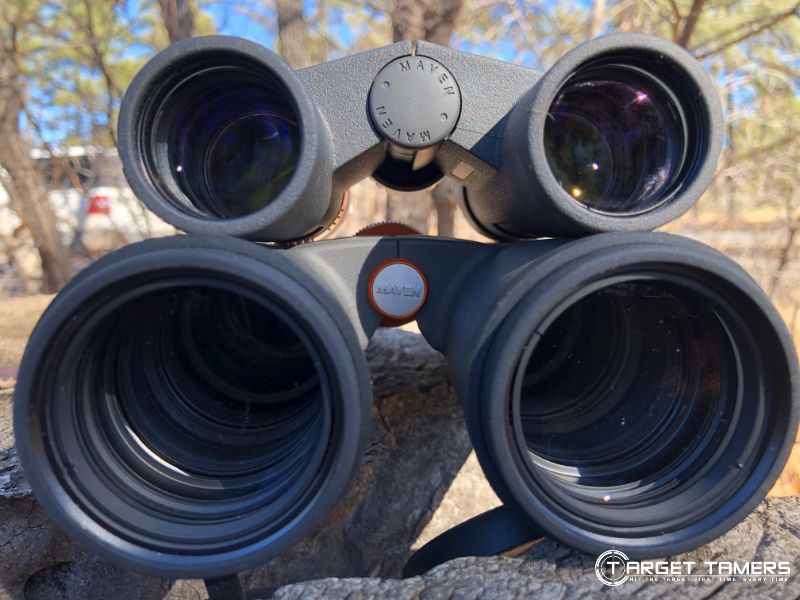
Larger objective lenses on binoculars are extremely effective for glassing in lowlight conditions and for astronomy. However, larger lenses also mean a bulkier and heavier binocular. Size and weight are less of a consequence when it’s tripod-mounted for stable, touch-free (to an extent) use.
However, this is less convenient for birdwatching, sports matches, and other applications where compactness and ease of use are the priority. Divert your attention to our Why & How Lens Size Matters guide to get a comprehensive look at its role.
How Big of an Objective Lens do I Need?
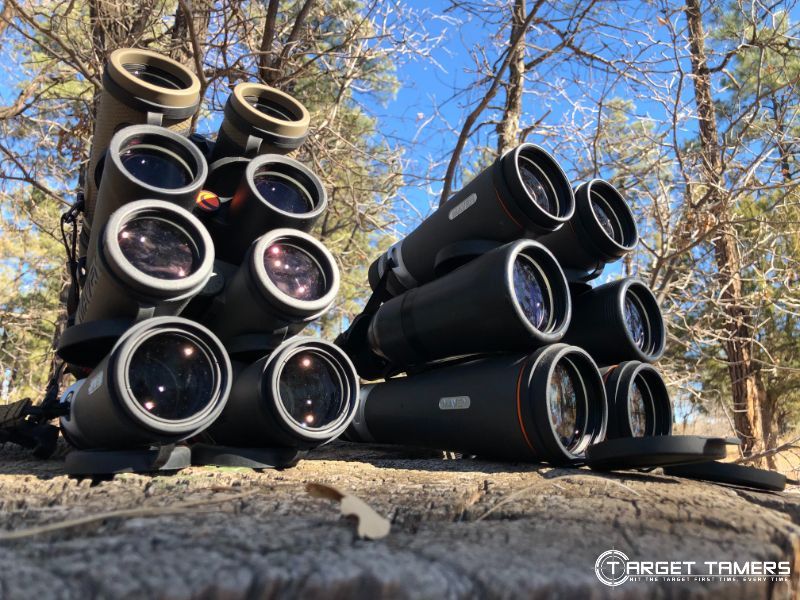
Choosing the objective lens diameter on binoculars should be dependent on what you want to do with them. Larger lenses are best for applications where a lot of light is needed such as in lowlight conditions or in astronomy applications. Magnification, binocular size, and glass must be considered.
Compact binoculars with configurations of 7x25, 10x25, and 8x32 are excellent for recreational use, camping, and backpacking activities. The best mid-size binoculars comprise of 8x42, 10x42, and 10x50 binoculars and are excellent for almost all outdoor activities. But full-size binoculars that are designed for tripod-mounting such as 15x56, 18x56, and 25x70 can allow for more distance and better sights in the night skies.
Numbers on Binoculars Example Chart
| Binoculars | Magnification | Aperture Size |
|---|---|---|
| 7x25 | 7x | 25mm |
| 8x42 | 8x | 42mm |
| 10x42 | 10x | 42mm |
| 12x50 | 12x | 50mm |
| 15x56 | 15x | 56mm |
Binocular Features to Consider
Binocular numbers alone do not tell the entire story and it would be an injustice not to discuss other factors that affect binocular performance. This is a quick run-down on other numbers and considerations on what to look for in binoculars.
Field of View (FOV)
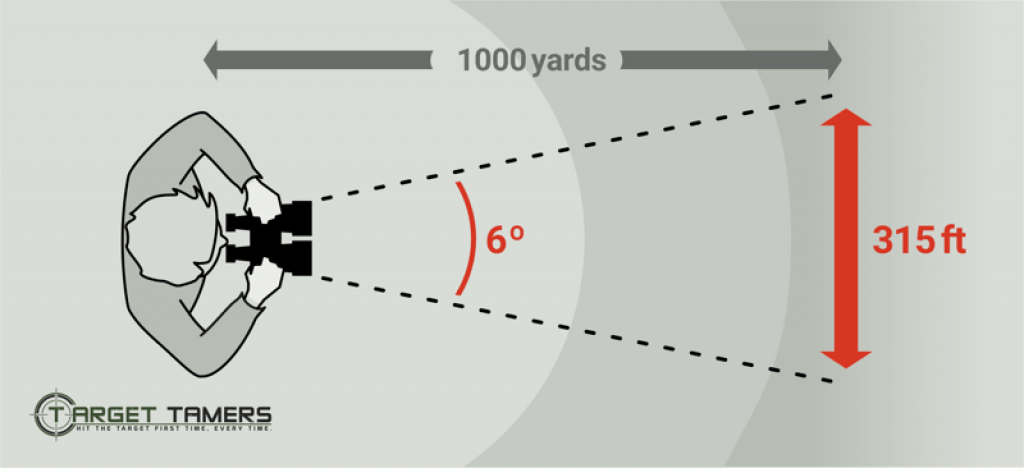
The field of view is the measured area of space that you can see through binoculars. When disclosed in binocular specs, it will be listed as an angular measurement or in linear feet/meters at 1000 yards/meters.
Generally, the larger the objective lenses, the wider the FOV. However, the higher the magnification, the narrower the FOV.
For example, an 8x42 and 10x42 have the same size apertures but the 8x42 binocular will have a wider FOV due to the lower 8x power.
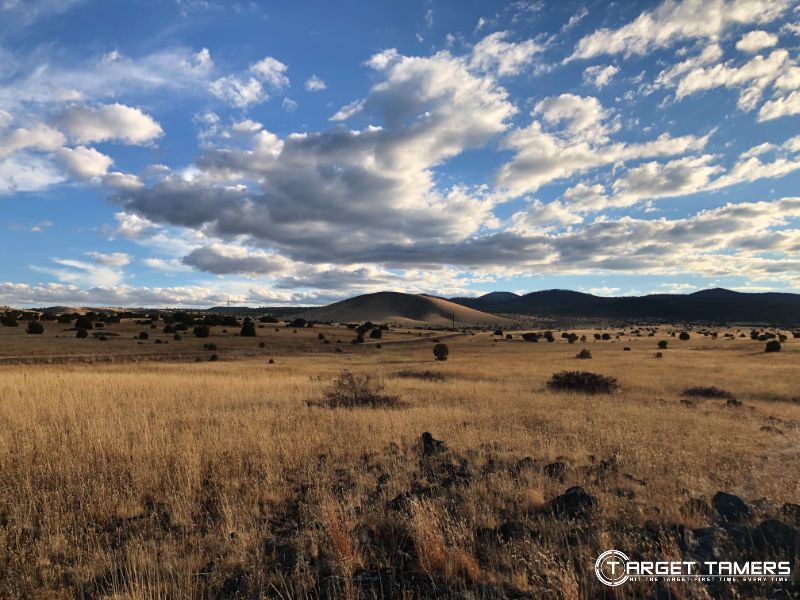
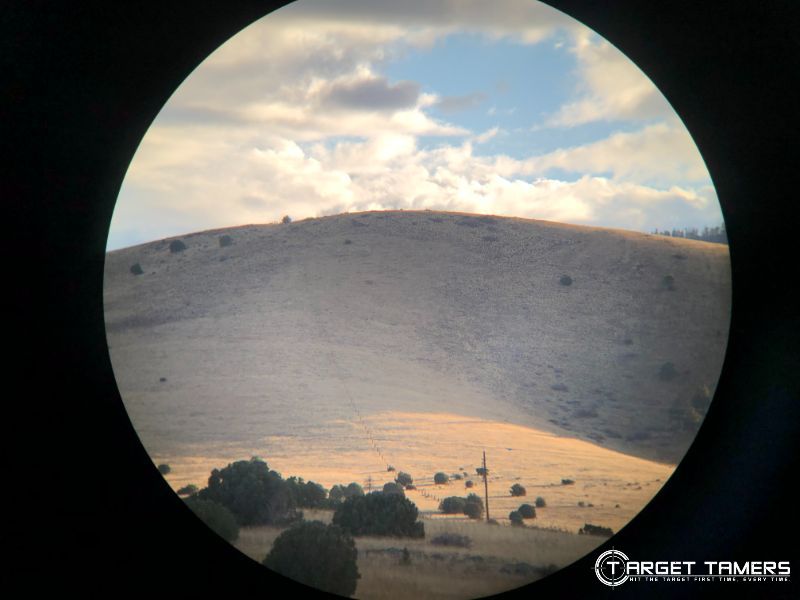
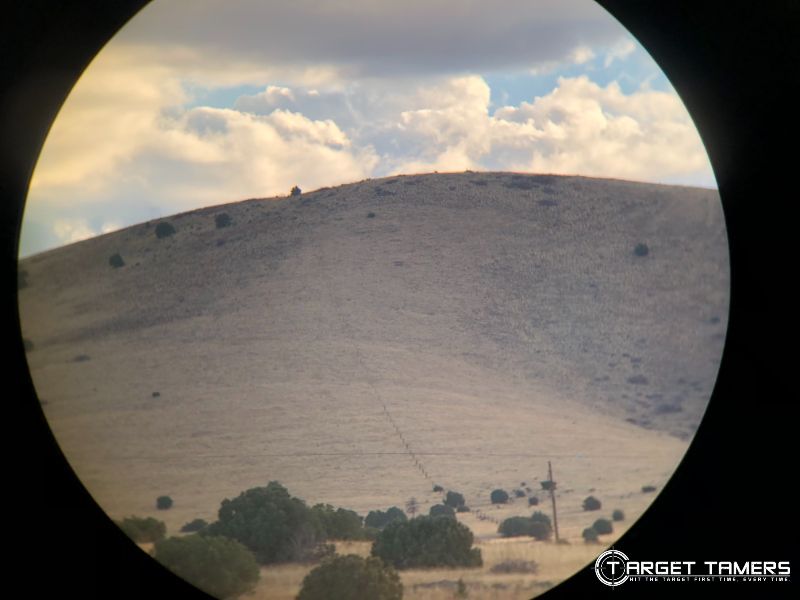
FOV specs vary between manufacturers and binoculars, so it mustn’t be overlooked when considering a potential buy. See our Field of View Explained guide for more info.
Exit Pupil
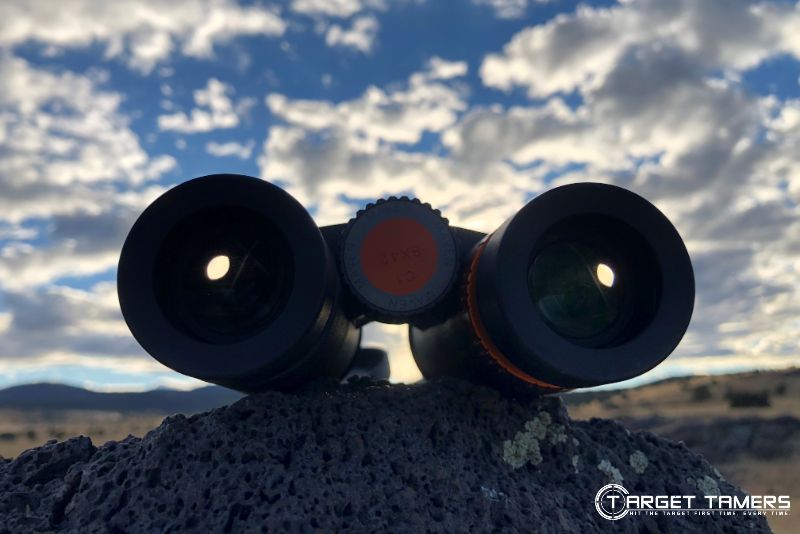
Binocular exit pupil is measured in millimeters and represents the size of the beam or cone of light that you can see through the eyepieces. The light that transmits through the exit pupil in the eyepiece is what reaches the eye. It is calculated by dividing the aperture by the magnification.
For example:
- 10x42 binoculars
- 42/10 = 4.2mm exit pupil
The exit pupil can influence how bright your experience is in bright daylight or in dark conditions as the human pupil dilates and contracts in various light conditions. While we discuss this in-depth about rifle scopes, the same info in our Exit Pupil mini guide also applies to binoculars.
Weight & Size
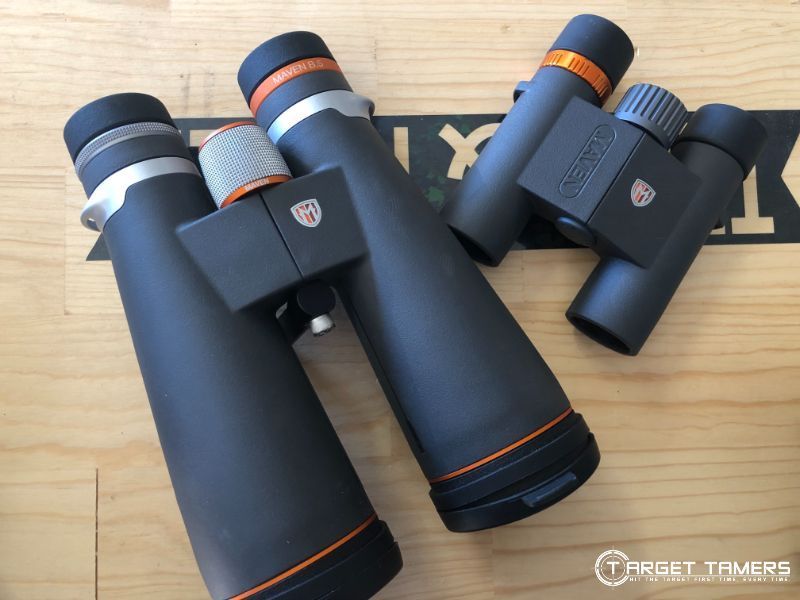
The higher the magnification and the larger the objective lenses, the bulkier and heavier the binoculars. It is essential to determine how they will be used. It may mean that compact binoculars are a must-have or that size is less of a concern as it will be tripod-mounted most of the time.
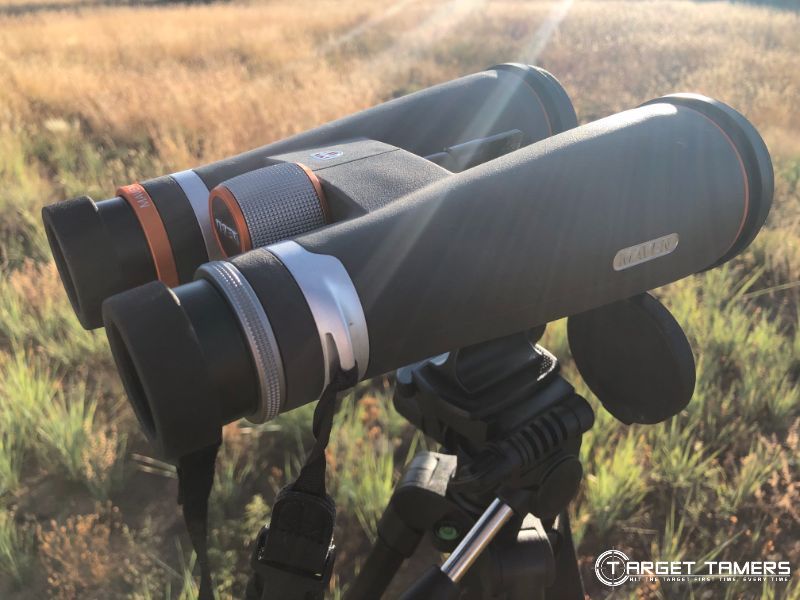
Generally, size will be determined by the apertures. You can have high powered compact binoculars such as 7x25 and 10x25 options. These are best suited for fast use in recreational and general-purpose applications as are the top mid-size binoculars.
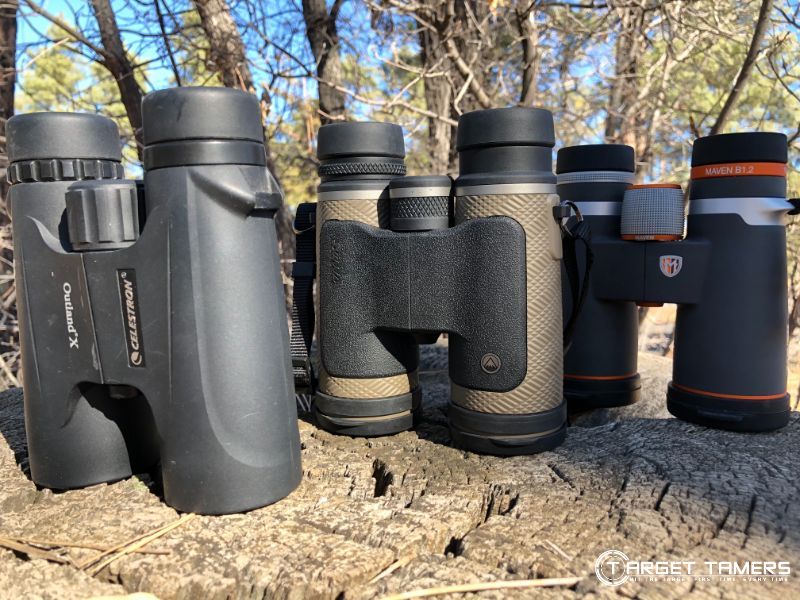
However, larger objective lenses mean larger objective bells and more weight even though magnification can be as low as 7x and 10x such as 7x50, 10x50, and 10x56 binoculars. These tend to be better for more specific applications like marine use, hunting, and some limited amateur astronomy.
Glass & Coatings
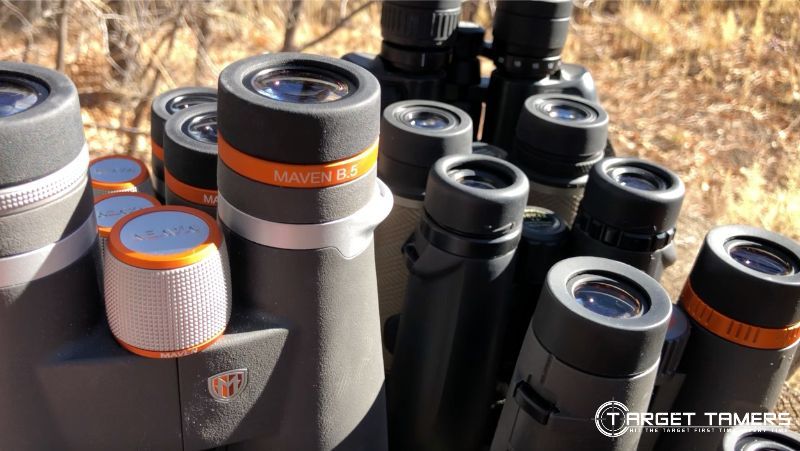
The quality of the glass and coatings used for the prisms and lenses has just as much or more to do with the binocular experience as the numbers and specs. They can minimize the effects of optical aberrations and improve brightness and resolution in ways that binocular specs cannot do.
Therefore, a high-end 10x42 can outperform a cheap 12x50 even though the 12x50 should perform better in twilight conditions. It’s not just about the numbers.
However, quality glass and coatings are intertwined with cost and budget. To get more quality and optical performance out of a binocular, you may have to spend more. Our Cheap VS Expensive Binoculars guide will help you figure out a balance between quality and value.
It’s Not Just About the Numbers
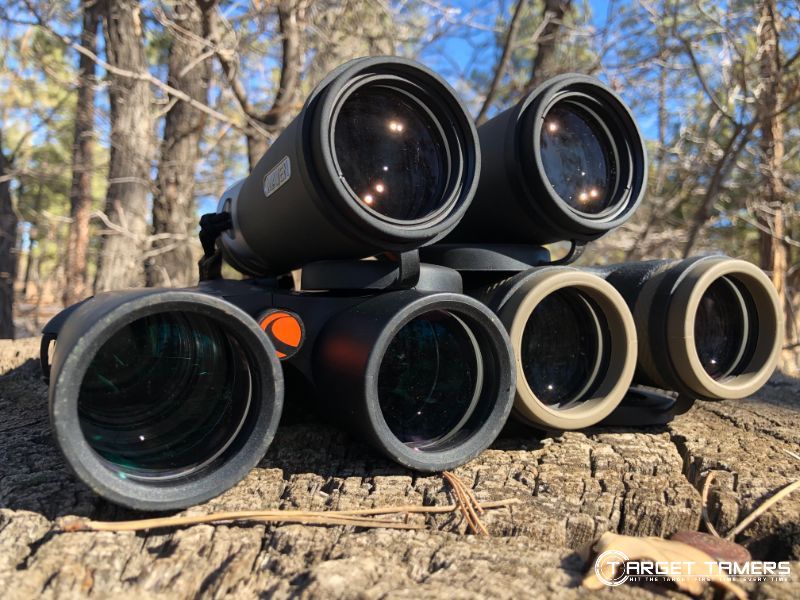
By now, you should at least be able to interpret what the numbers on binoculars mean when you see them – magnification and objective lens size.
However, it’s not the end of the story. As you can see, it opened a door to interpreting other binocular numbers and understanding additional features that will affect your decision on what binoculars are right for you.
While seeing specs on paper is one thing, being able to test and handle them in person is another. Time to get busy. Happy hunting!
Further Reading
- 10x42 vs 8x42 Binoculars for Hunting, Birding, Safari & Event Observation
- 4 Features to Consider & Look for When Buying Binoculars
- Best Binocular Magnification For Hunting, Birding, Wildlife Observation & More
- Binocular Glass 101: BK7 vs BAK4 and Porro Prism vs Roof Prism
- Binocular Terminology: Glossary Of Features & Parts Of Binoculars




